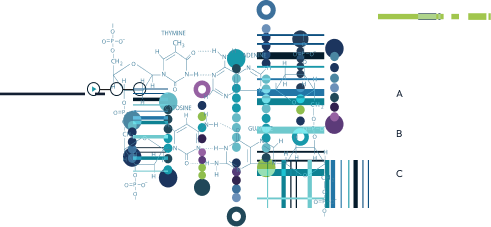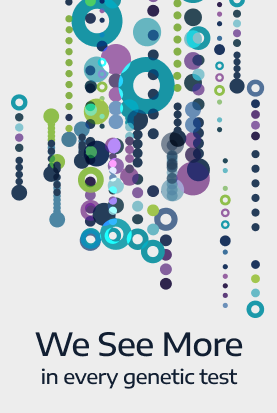News Center

Spotlight on Epilepsy
- By Variantyx, Inc
- Posted in Clinical Education
Epilepsy is a neurological disorder in which abnormal brain activity results in seizures. Signs and symptoms of seizures are not always easily recognizable, particularly in young children. They can include:
- Uncontrolled twitching of arms and legs
- Periods of staring into space, loss of attention or lack of response
- Periods of momentary confusion
- Loss of consciousness or awareness
- Sudden feelings of fear or anxiety
- Complaints of unusual sensations (sights, sounds, tastes, smells, feelings)
Seizures can be induced by many factors, but some forms of epilepsy are genetic in origin. Even in these cases, obtaining a molecular diagnosis can be difficult due to oftentimes complex patterns of inheritance.
The first challenge is that many seizure disorders look clinically very similar. Plus seizures can be a major clinical presentation in other rare genetic disorders. So it can be difficult to distinguish between different epilepsy syndromes and seizures as a symptom of another disorder based on clinical presentation alone.
The second challenge is that epilepsy syndromes and other disorders that present with seizures can be inherited through autosomal dominant, autosomal recessive, X-linked and mitochondrial mechanisms with many different genes affected.
The following table provides examples of epilepsy syndromes and rare genetic disorders where seizures are a major clinical presentation:
| Type of disorder | Disorder | Inheritance | Gene(s) affected | Mutation type(s) |
| Epilepsy syndrome | Generalized epilepsy with febrile seizures plus (GEFS+) | Autosomal dominant | SCN1A | Small nucleotide change |
| Epilepsy syndrome | Dravet syndrome | Autosomal dominant | SCN1A | Small nucleotide change, del/dup, chromosomal rearrangement |
| Epilepsy syndrome | Myoclonus epilepsy and ragged red fibers (MERRF) | Mitochondrial | MT-TK | Mitochondrial small nucleotide change |
| Other disorder manifesting as epilepsy | Fragile X syndrome | X-linked | FMR1 | CGG repeat expansion |
| Other disorder manifesting as epilepsy | Rett syndrome | X-linked | MECP2 | Small nucleotide change, del/dup, chromosomal rearrangement |
Specific gene testing for these and other disorders is available, but a multi-gene panel that can distinguish between different epilepsy syndromes and other disorders that present with seizures is most often recommended.
Genomic Unity® Epilepsy Analysis provides comprehensive, phenotype-driven testing of >370 genes associated with seizure disorders. Its single method approach identifies SNVs and indels, larger structural variants (including del/dups) and tandem repeat expansions within this set of genes, avoiding the need for iterative rounds of testing. The option is provided to extend testing to the mitochondrial genome or to reflex up to a comprehensive, phenotype-driven analysis of all genes in the case of a negative result.
While cures do not exist for most epilepsy disorders, medication can oftentimes help reduce the seizures. Depending on the individual disorder and the area of the brain that the seizures are emanating from, surgery may be an option when medication alone is not sufficient to adequately control the seizures. Alternative therapies include vagus nerve stimulation, deep brain stimulation and following a ketogenic diet.
